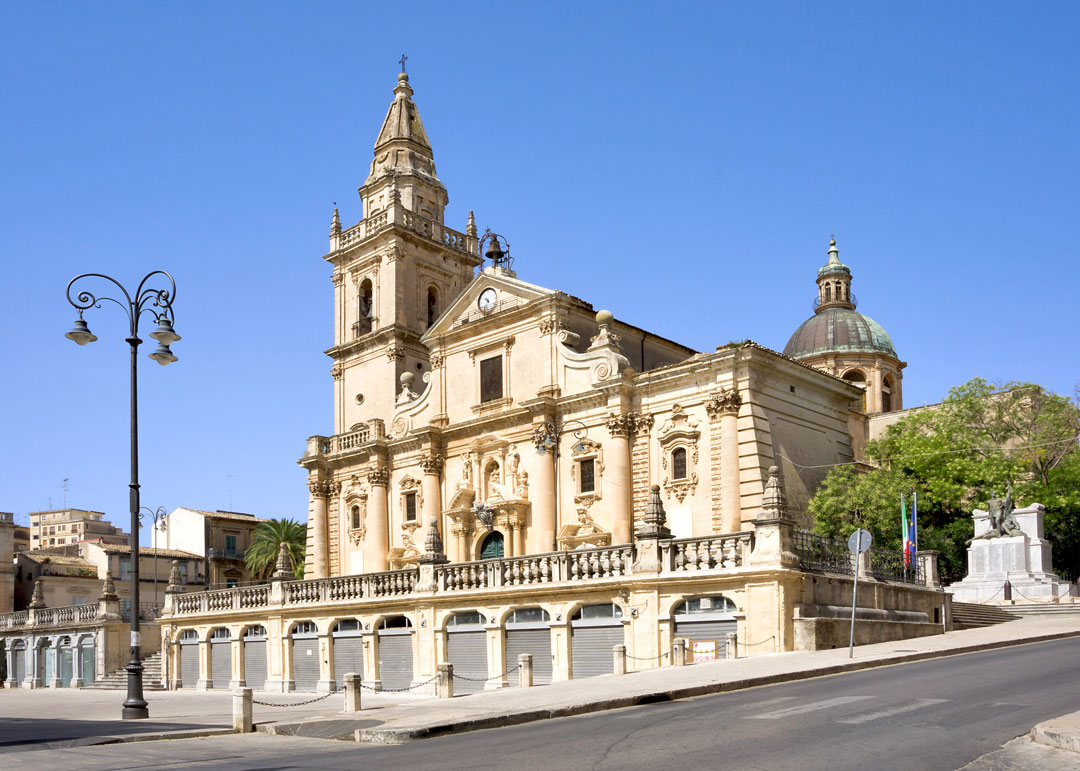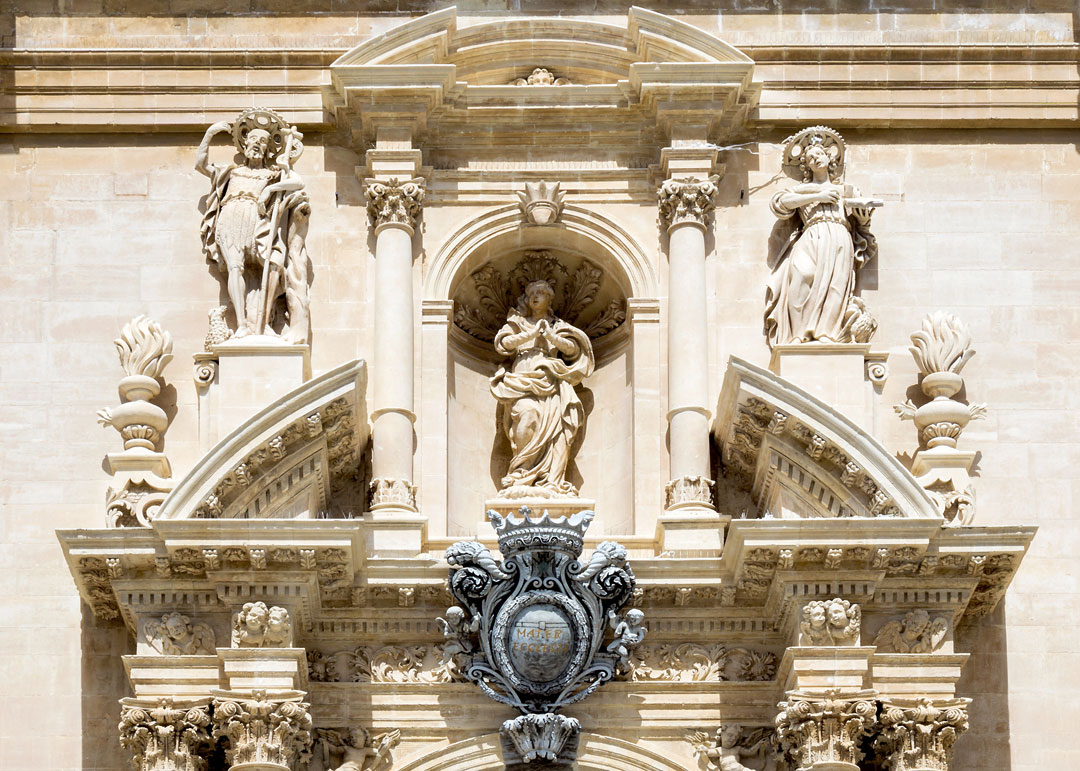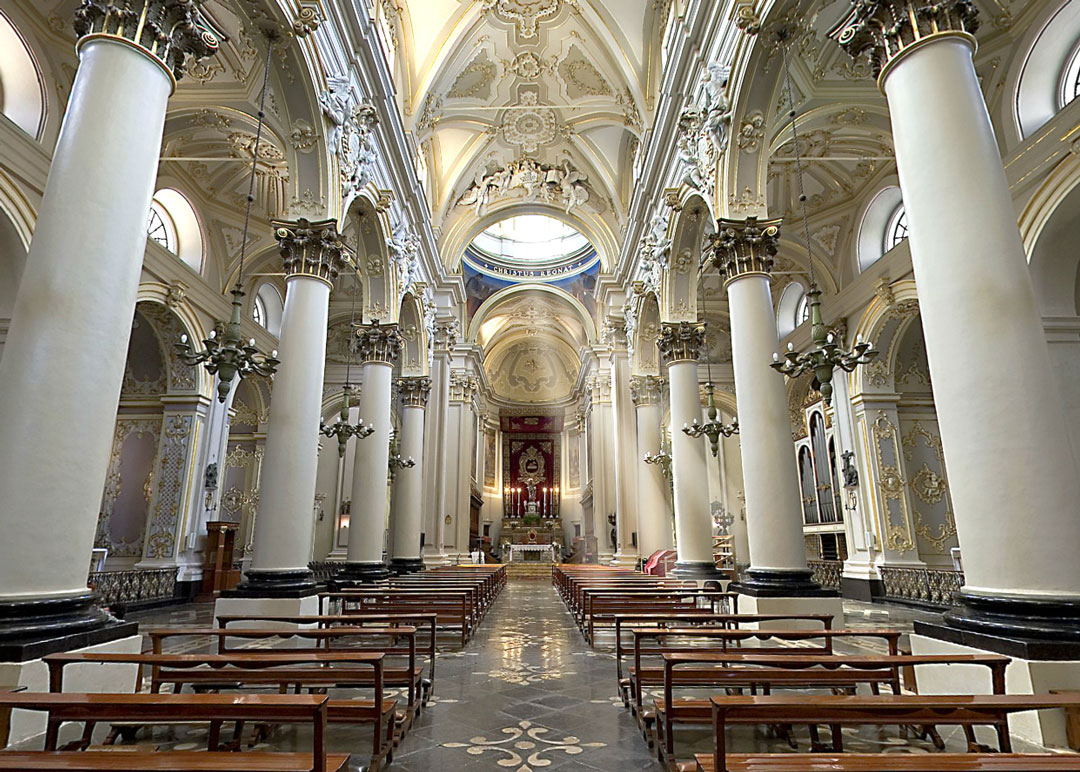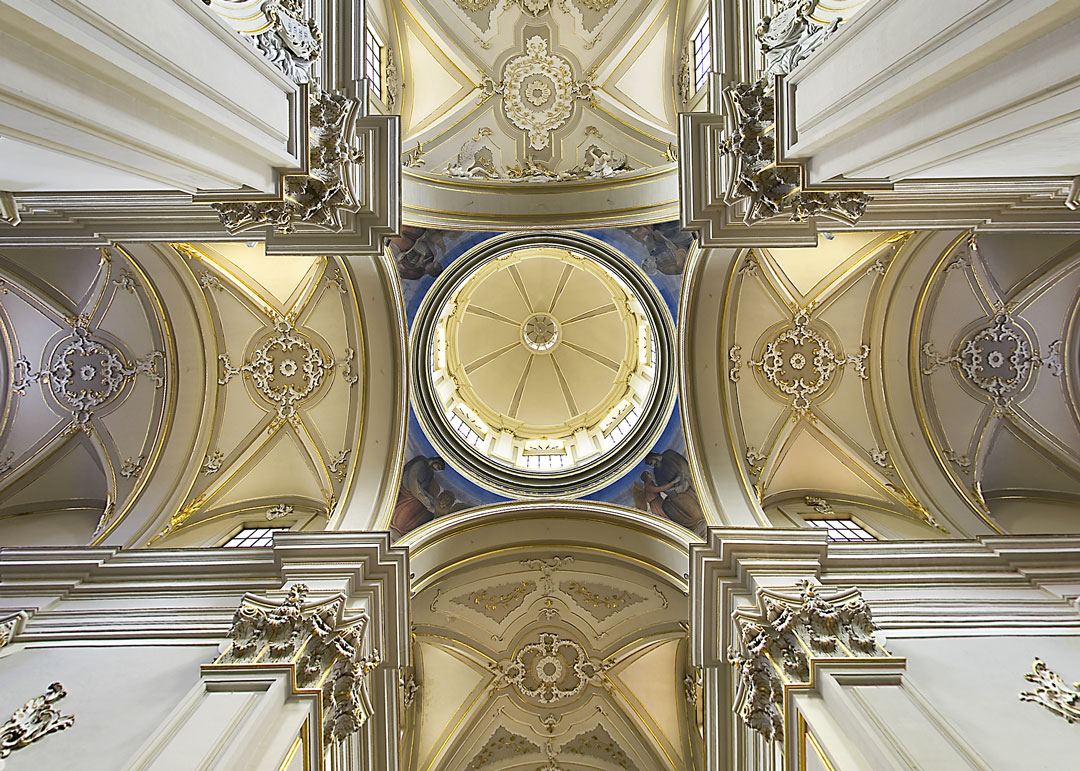Portami Qui

 La Cattedrale, dedicata a San Giovanni Battista, sorge al centro del nuovo abitato di Ragusa, edificato dopo il terremoto del 1693. Costruita in stile barocco fu iniziata nel 1718 e terminata nel 1778, anno in cui venne consacrata .
La Cattedrale, dedicata a San Giovanni Battista, sorge al centro del nuovo abitato di Ragusa, edificato dopo il terremoto del 1693. Costruita in stile barocco fu iniziata nel 1718 e terminata nel 1778, anno in cui venne consacrata .
La monumentale facciata ,ricca d’ intagli e sculture, prospetta su un sagrato sopraelevato e circondato da una settecentesca balaustra in pietra pece.
L’ interno , impreziosito dagli stucchi, dorati eseguiti alla fine del Settecento dai fratelli Gianforma , viene deciso in tre navate da due file di colonne in pietra pece con i capitelli artisticamente scolpiti e indorati. Degni di nota: il pavimento, in pietra pece intarsiata di pietra bianca, il monumentale frontale dell’ organo Serassi (1857) e i quadri di S. Filippo Neri e del Cristo alla Colonna.
Alle spalle della chiesa , il Museo della Cattedrale ospita una esposizione di opere di argenteria, oreficeria e tessuti dal XIV al XX secolo.
 The Cathedral dedicated to San Giovanni Battista, stands in the centre of the new area in Ragusa, which was built after the earthquake of 1693. Its construction in baroque style begun in 1718 and finished in 1778 after which it was solemnly consecrated. The monumental façade, rich in sculptures and engravings, looks on to the church-square elevated above a eighteenth century balustrade made of pitch stone.
The Cathedral dedicated to San Giovanni Battista, stands in the centre of the new area in Ragusa, which was built after the earthquake of 1693. Its construction in baroque style begun in 1718 and finished in 1778 after which it was solemnly consecrated. The monumental façade, rich in sculptures and engravings, looks on to the church-square elevated above a eighteenth century balustrade made of pitch stone.
The interior of the Cathedral is decorated by gilded stuccoes created by the Gianforma brothers at the end of the eighteenth century. Two rows of pitch stone colurnns with gilded sculpted capitals divide the church into three aisles. Other remarkable characteristics are: the pitch stone floor with white stone inlays, the monumental frontal of the Serassi organ (1857), the pictures of St Filippo Neri and the pictures of Christ at the column.
The Cathedral Museum stand in the back of the church and contains silvers, jewels and churc vestments from fourteenth to nineteenth century.
 La Cathèdrale, dediée à San Jean Baptiste, s’éleve dans le centre de la nouvelle ville de Ragusa batie après le tremblement de terre du 1693. La construction de la cathédrale de style baroque commença en 1718 et finit en 1778. Dans le meme année, elle fut solennellement consacrée.
La Cathèdrale, dediée à San Jean Baptiste, s’éleve dans le centre de la nouvelle ville de Ragusa batie après le tremblement de terre du 1693. La construction de la cathédrale de style baroque commença en 1718 et finit en 1778. Dans le meme année, elle fut solennellement consacrée.
La façade monumentale est riche en entailles etsculptures; elle donne sur un parvis surélevé et entouré par une balustrade en pierre de poix. L’intérieur est enrichi par des décors en stuc dorés et artistiquement sculptés. Il y a encore: le dallage en pierre de poix avec des entailles de pierre blanche, la façade monumentale de l’orgue Serassi (1857) et les portraits de Saint Filippo Neri e du Christe à la Colonne.
Le Musse de la Cathèdrale est placée apres l’eglise et argenteries, bijoux et ornements sacerdotal du XIVme, XIVme,XVIIIme sìecles.
 Die Kathedrale, San Giovanni Battista (Johannes d.T.) geweiht, ragt im Zentrum der neuen Ortschaft Ragusa auf und wurde nach dem Erdbeden von 1693 erbaut. Im barocken Stil errichtet, wurde sie 1718 begonnen und 1778 beendet und im gleichen Jahr feierlich geweiht. Die monumentale Fassade, reich an Schnitzereien und Skulpturen, geht auf einen erhöhten Kirchenplatz, der von einer Pechstein-Balustrade aus dem 18.
Die Kathedrale, San Giovanni Battista (Johannes d.T.) geweiht, ragt im Zentrum der neuen Ortschaft Ragusa auf und wurde nach dem Erdbeden von 1693 erbaut. Im barocken Stil errichtet, wurde sie 1718 begonnen und 1778 beendet und im gleichen Jahr feierlich geweiht. Die monumentale Fassade, reich an Schnitzereien und Skulpturen, geht auf einen erhöhten Kirchenplatz, der von einer Pechstein-Balustrade aus dem 18.
Jahrhundert umgeben wird. Der Innenraum ist mit vergoldeten Stuckarbeiten ausgeschmückt, von den Gehbrüdern Gianforma ausgeführt worden sind. Er wird von zwei Säulenreihen aus Pechstein mit künstlerisch gestalteten und vergoldeten Kapiteln in drei Schiffe unterteilt. Erwähnenswrt sind: der Pechsteinboden, verziert mit weiß er Stein, die monumentale Front der Serassi-Orgel (1857) und die Bilder des S. Filippo Neri und des Christus an der Säule.
Die Kathedrake Museum befindet sich hinten der Kirche und beinhaltet Silberzeugen, Schmuckstücken und Gewebwn des., 15Jah, 16 Jah, 17 Jah und 18 Jah.






